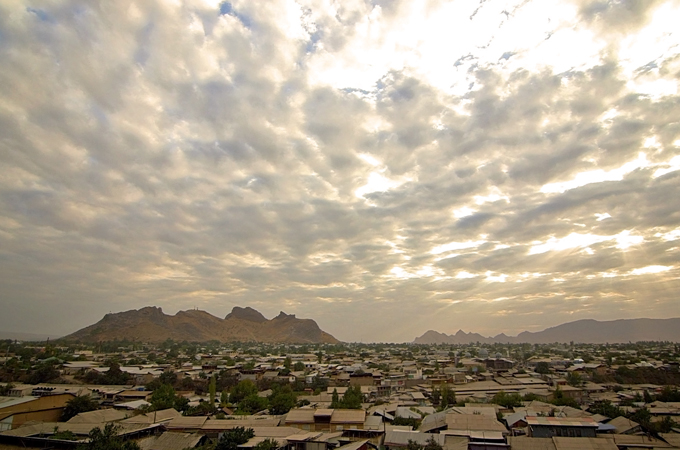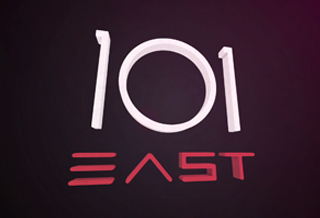
Unhealed Wounds of Osh
A look at continuing discrimination and failure of justice three years after deadly ethnic clashes in south Kyrgyzstan.
On June 11, 2010, conflict erupted between the Uzbek and Kyrgyz communities of southern Kyrgyzstan, with most of the violence concentrated in Osh and the neighbouring town of Jalalabad.
The ousting of Kurmanbek Bakiyev, the country’s then-president, earlier that year had led to violent protests and a power struggle. Long-standing inter-ethnic tensions were exploited, and under lawless conditions, mobs of ethnic Kyrgyz were able to take part in organised assaults on Uzbek neighbourhoods.
Hundreds of people were killed and thousands wounded, homes and businesses were destroyed, and hundreds of thousands of people were displaced.
Al Jazeera’s Robin Forestier-Walker was one of the first journalists inside Osh in June 2010 when the violence started.
When he returns to the city three years later, he finds many still living in fear of the authorities. Their accounts allege the involvement of the military in the attacks on the Uzbek community which resulted in summary lynchings and the fleeing of tens of thousands of refugees across the border into neighbouring Uzbekistan.
Many are still in pursuit of justice for the crimes from three years ago. But Human Rights Watch questions the standards of fair trials relating to the 2010 violence. A vast majority of cases have ended with the conviction of Uzbeks and statistics show that few Kyrgyz have been jailed despite the fact that Uzbeks disproportionately bore the brunt of the violence.
But all sides share their struggles in seeking justice through a system that favours the powerful. Many say the courts only deliver verdicts based on forceful pressure or bribes, forcing families to take matters into their own hands.
Today, peace has returned to the streets of Osh but deep seated grievances are a long way from being resolved. There are approximately 750,000 Uzbeks living in Kyrgyzstan, but few of them hold positions in the government, police or military. Since 2010, media outlets stopped broadcasting in their language. Only recently has one radio station, Intymak Radio, begun broadcasting some programmes in Uzbek again. Uzbek language schools are on the decline, with national tests now permitted only in Kyrgyz and Russian.
Kyrgyz nationalism is on the rise, visible through a proliferation in monuments to Kyrgyz heroes. Meanwhile, minority ethnic groups question its inclusivity. Triumphant nationalists include Melis Myrzakmatov, the populist Kyrgyz mayor of Osh, who claims he is bringing reconciliation to the city. He wants to dismantle segregated Uzbek neighbourhoods known as mahallas to make way for shared apartment blocks.
Under these circumstances, reconciliation seems a long way off and the two communities continue to live in an uneasy peace. Without reconciliation and justice, there is a widespread fear that history will repeat itself yet again.
#Osh is keeping an uneasy peace three years after deadly ethnic conflicts. But can it last? #UnhealedWounds
| Returning to Osh |
By Robin Forestier-Walker
 |
| In June 2010, the ancient city of Osh was torn apart by deadly inter-ethnic violence [Lee Ali/Al Jazeera] |
I felt deep anxiety about returning to southern Kyrgyzstan.
In June 2010 more than 400 hundred people were murdered here – simply for being Uzbek or Kyrgyz.
Osh city’s inhabitants endured many foreign journalists scrutinising their suffering, and I was one of them. I witnessed the displacement of hundreds of thousands of people and saw neighbourhoods almost completely destroyed by fire.
By filming a documentary about people’s experiences three years on, were we going to cause more pain or achieve something positive?
“You will be treading on egg-shells,” said a friend. She was right. Virtually every step of the way in the making of this film, we were met with silence, sadness and reproach.
My 101 East colleagues were seeing Osh for the first time. Producer Sarah Yeo said she felt as if people wore masks to conceal their true feelings. Cameraman Lee Ali discovered the challenges of filming on the streets, where backs would suddenly turn and shop doors close in front of him.
Today, the damage has been mostly cleared. Many buildings have been redecorated and the city is well maintained. The streets are clean and new glass bus stops shelter commuters from the rain.
But from the holy rock of Mount Suleiman we looked down on an Uzbek neighbourhood and counted the shiny new corrugated roofs. There are lots – one for every home that was firebombed.
Inside those homes many remain deeply traumatised. One man, who was severely beaten in 2010, offered to translate for us until I told him the subject of our story.
“I’m sorry but I can’t help you,” he said. “I am still coming to terms with what happened. I walk the streets and I recognise those people who did what they did to me and my family, and they are smiling.”
Common narratives about the violence are split along ethnic lines. Many Kyrgyz believe that the international media took sides in this conflict, that only the Uzbeks were seen as victims. As one young Kyrgyz man told me, “some people, especially from abroad, are claiming different things not knowing the real situation, not understanding the local mentality.”
When I asked Janarbek, a taxi driver who lost his brother in the clashes, if anyone had come to ask how he felt, he said: “Yes, people like you. A lot of people came to visit us. But their visits are useless to us. They don’t understand our loss.”
What I wish to show in this film is that there are victims on both sides of the tragedy. The difference is that some have had access to justice while a great many have seen no justice at all.
The lines are confusingly blurred. Dilbar Kochkonova is a mother prepared to take the law into her own hands to secure a life sentence for the man accused of her son’s brutal murder. What is clear is that as a Kyrgyz victim, she feels confident enough to exercise her will.
Dilbar and her family have physically and verbally attacked the defendant, his family and defence team, because she believes the Kyrgyz justice system will not follow its course without intervention. Is she a victim, or an aggressor?
One issue that was impressed on me is that injustice in Kyrgyzstan is not an exclusively inter-ethnic problem. The country has experienced two political uprisings in the past decade, the present coalition government is fragile, and corruption and poverty are a daily reality for many people, regardless of their ethnicity.
But injustice for Uzbeks is of a different order of magnitude. Fewer than seven percent of the more than 5,000 crimes investigated in relation to the 2010 violence have resulted in prosecutions with a glaring ethnic bias. Over 90 percent of those convicted of murder have been ethnic Uzbek men, despite Uzbeks suffering the majority of deaths.
Many families of the victims have not even seen investigations launched, let alone reach trial. So in this regard, Dilbar is lucky. But at the same time, as I listened to her story, it was impossible to reconcile the image of a deeply grieving mother with a woman so hell-bent on revenge.
Not everyone wants to be seen as a victim. Farkhat, a young Uzbek DJ, is doing well professionally. The radio station he works at now broadcasts partly in Uzbek – a positive development for the city’s Uzbek inhabitants after broadcasting in their language went off air in 2010.
Farkhat tells us he would prefer to pretend the tragedy never happened. And he is not alone. But that seems more like a coping mechanism than a sign of recovery.
Can good come from resurrecting these painful memories? I am still not sure I have the answer.
|
